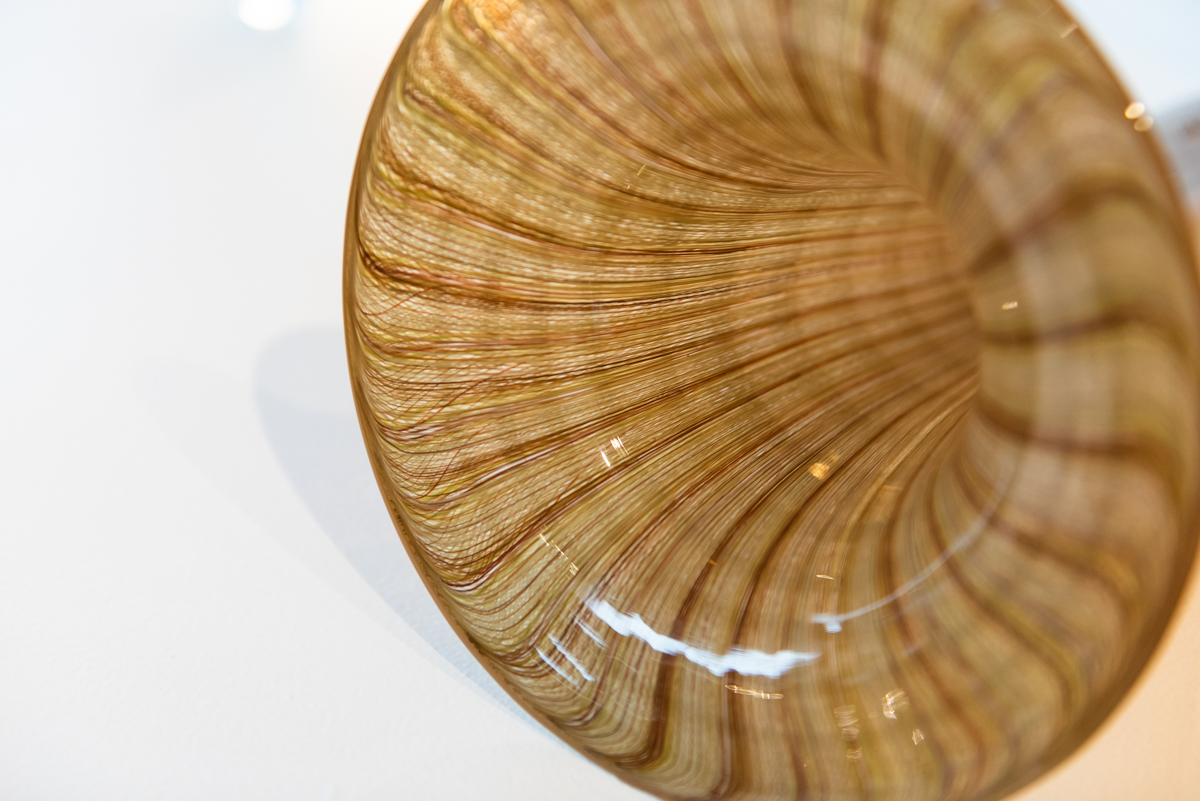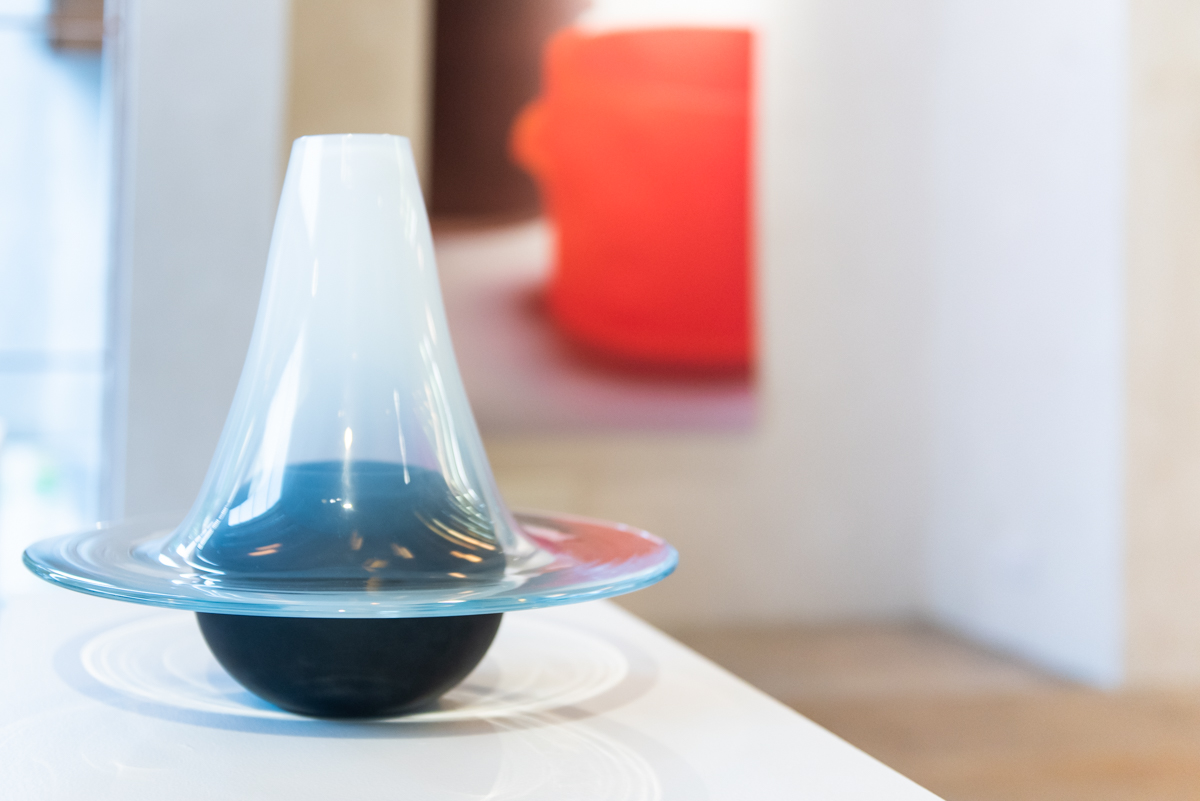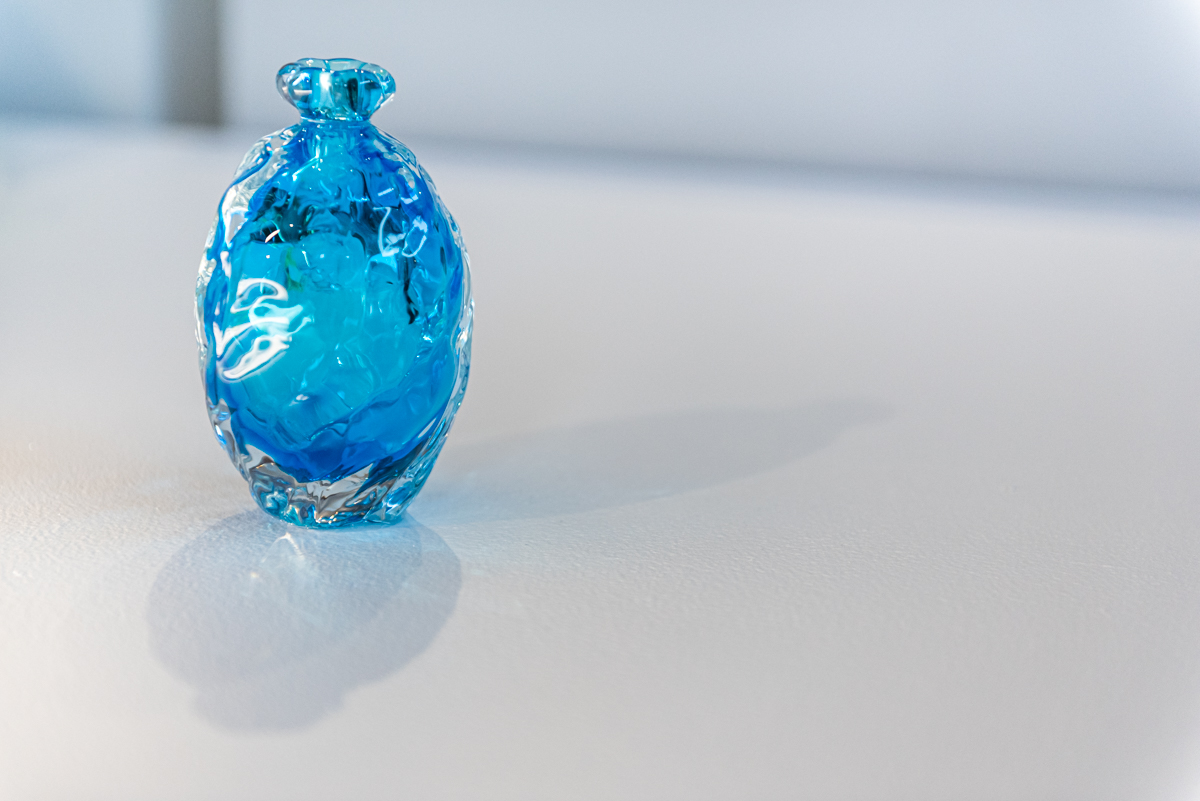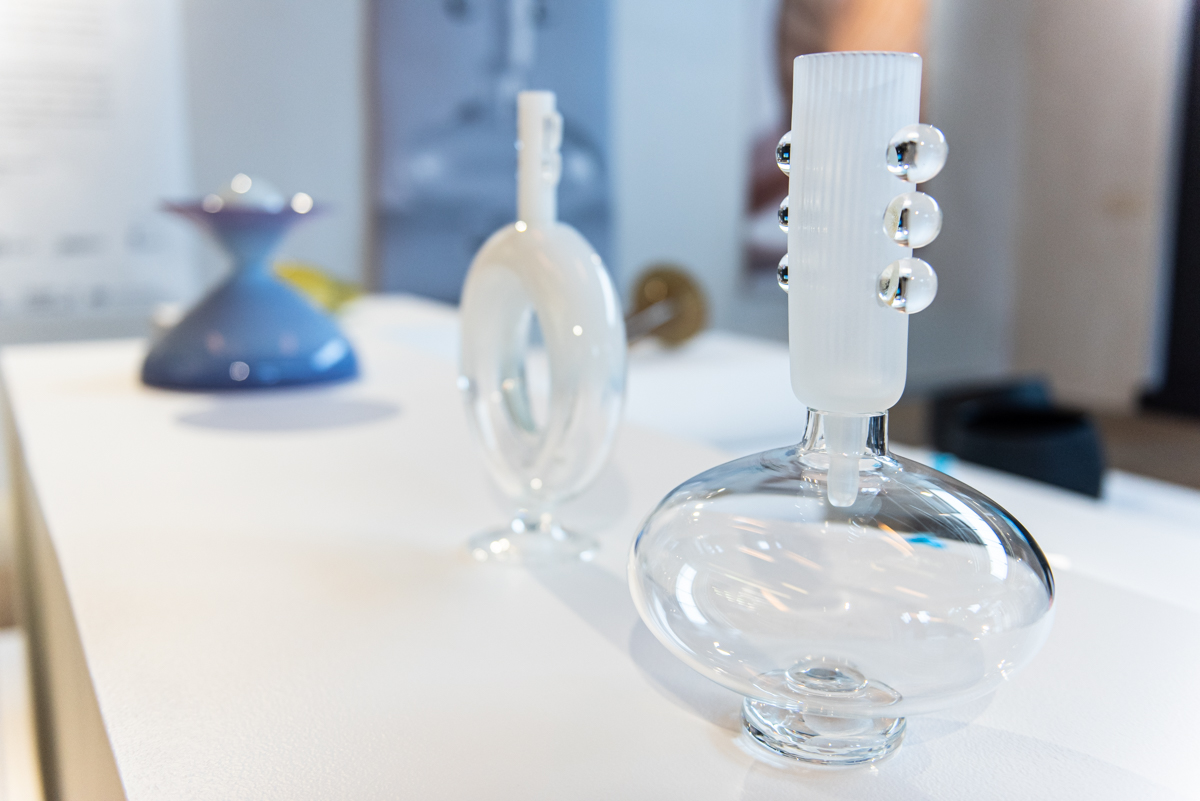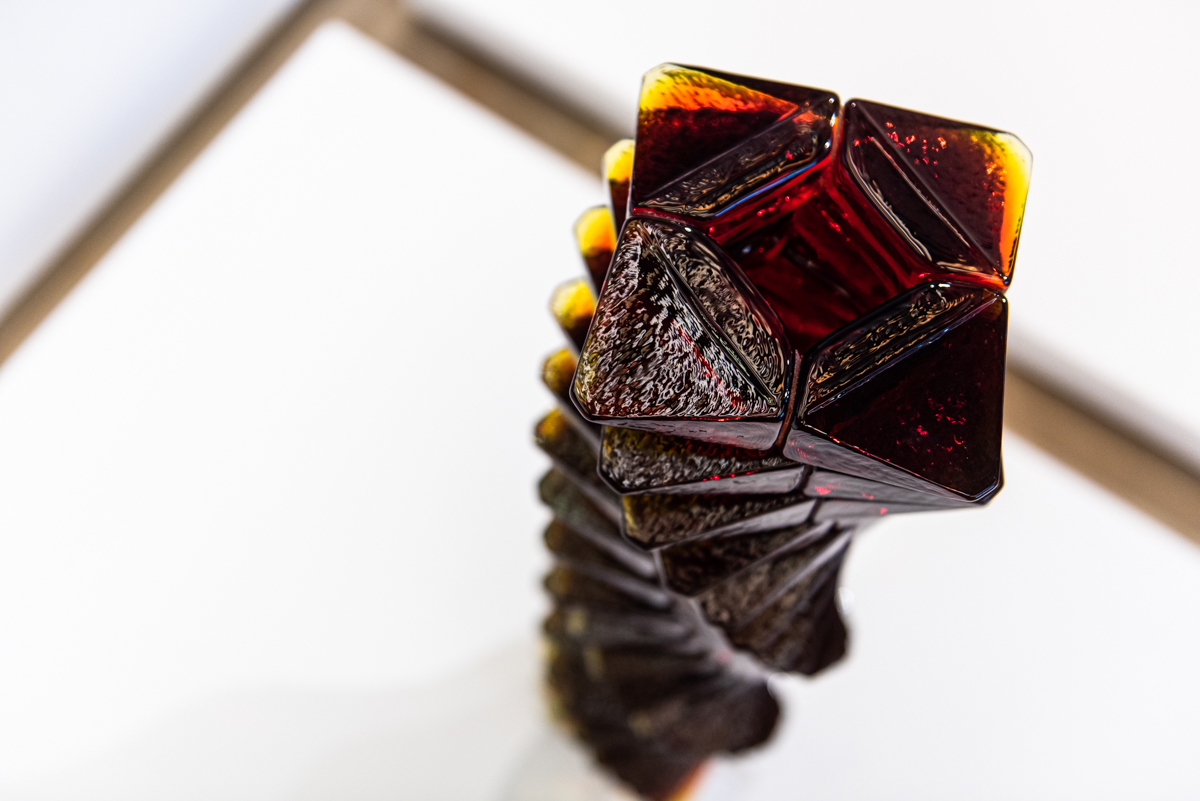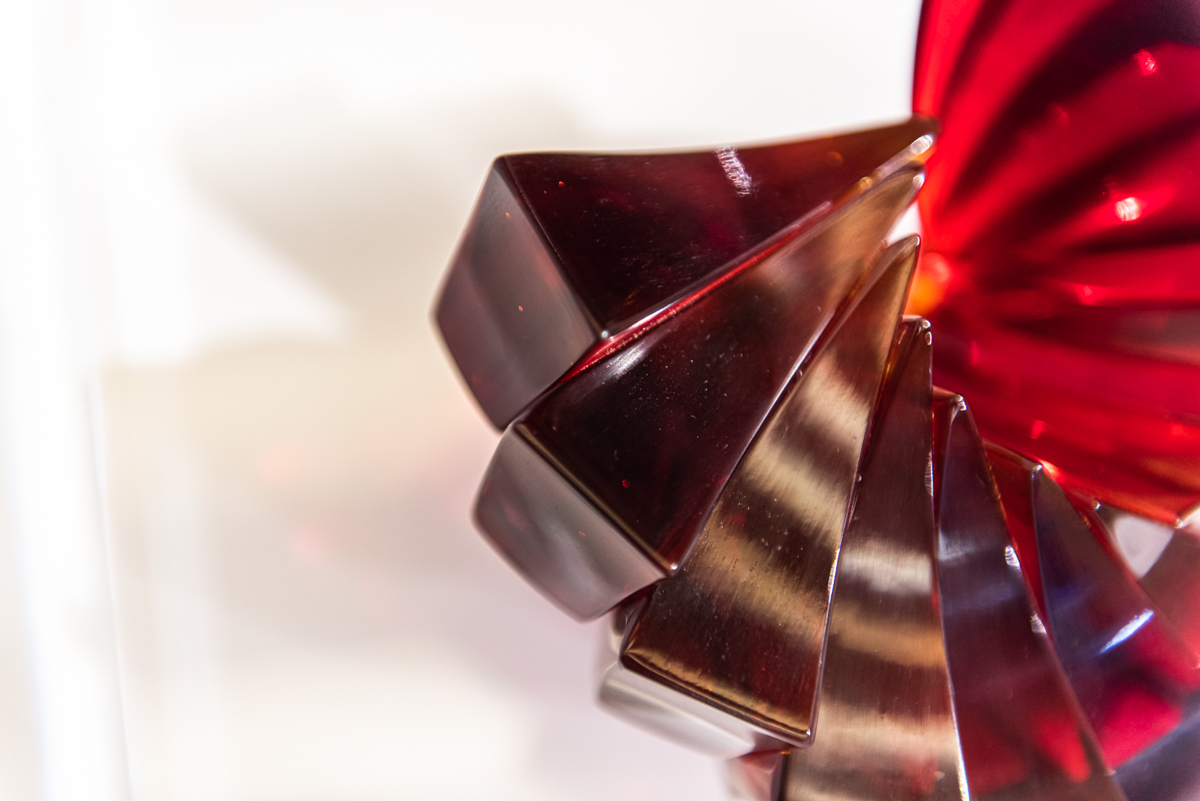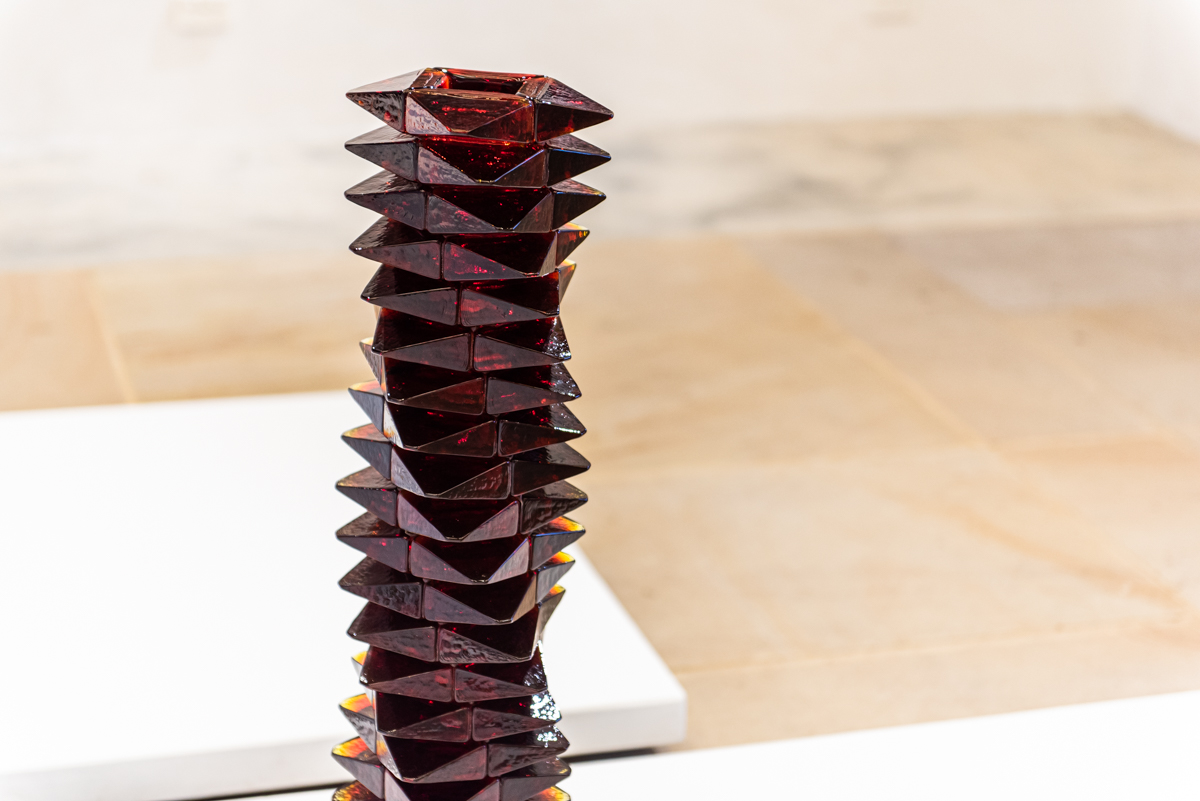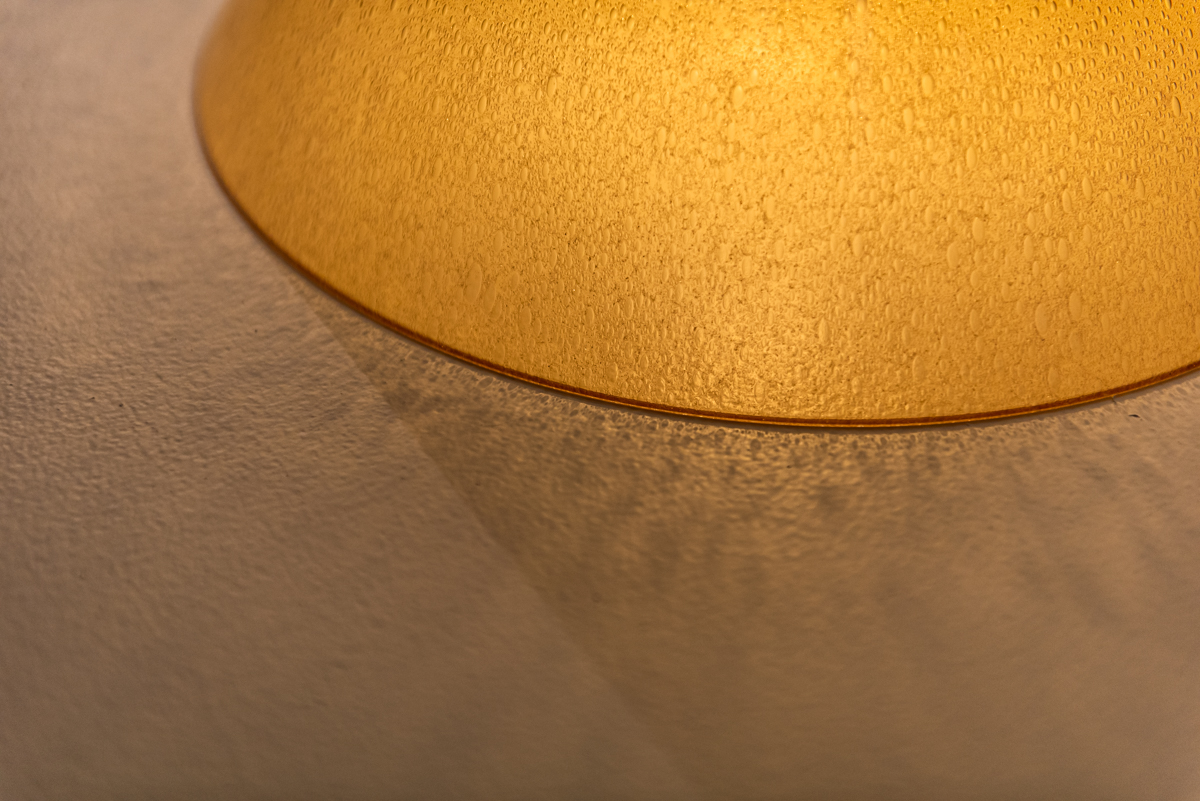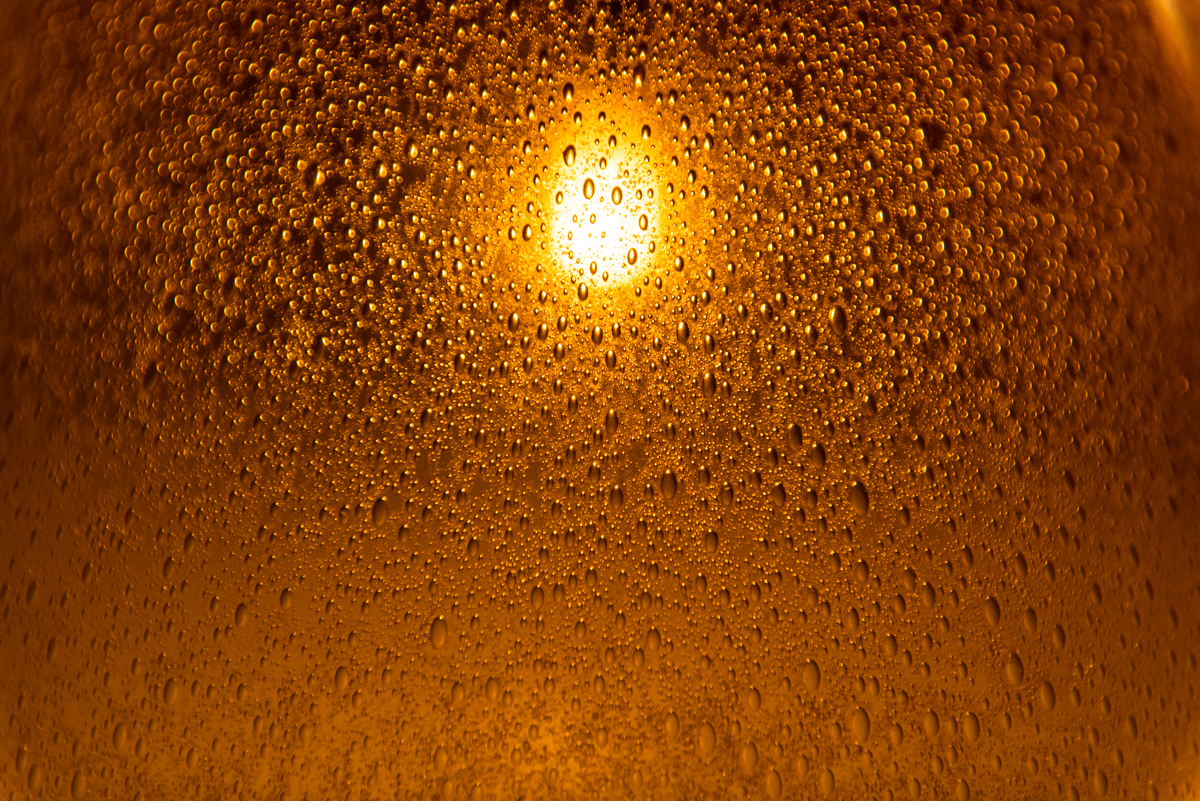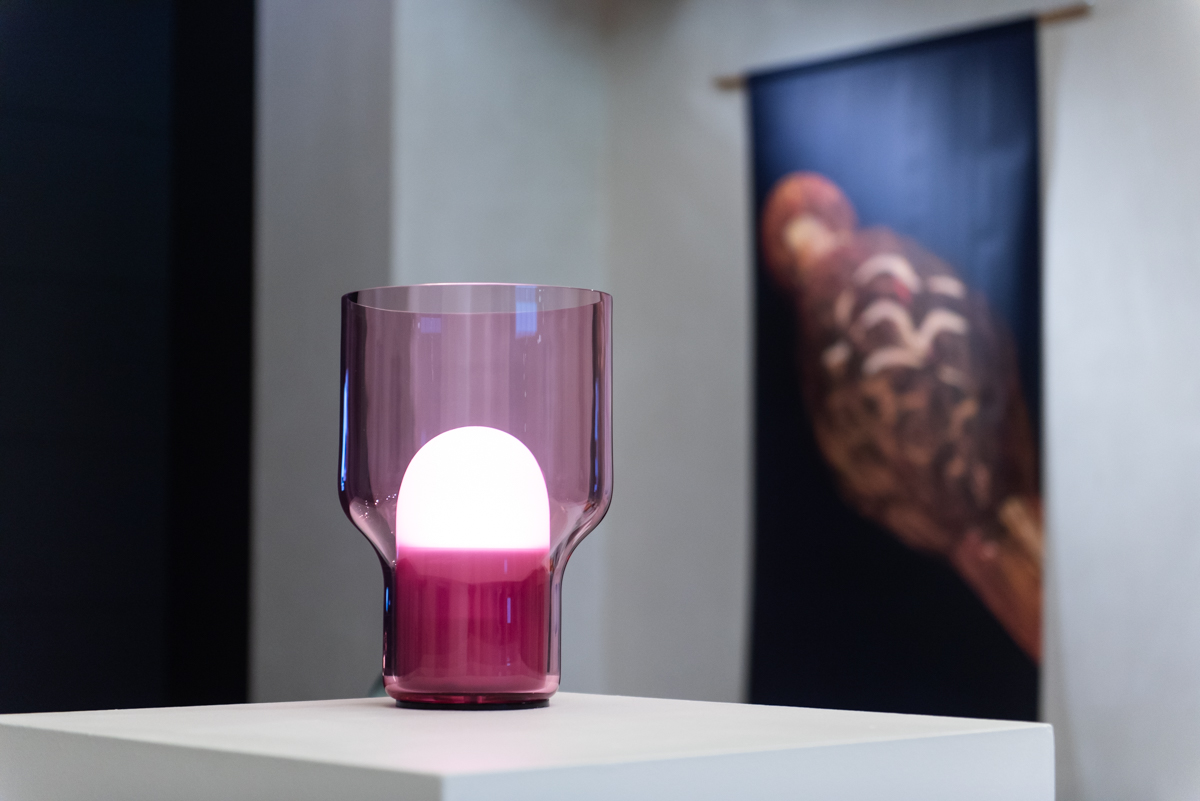Design Tasmania
Corner of Brisbane and Tamar streets
Launceston, 7250
Tasmania
info@designtasmania.com.au
+61 3 6331 5506
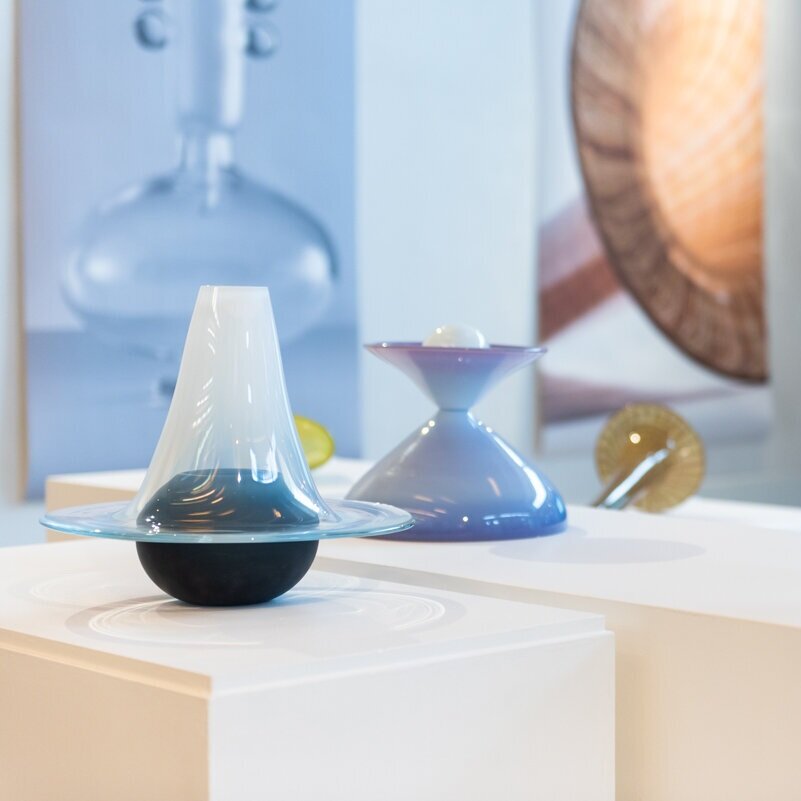
Glass Utopia
6 March - 26 April 2020
Inspired by the Murano glass chandelier that Italian architect Enrico Taglietti and his wife Francesca installed at the Italian Ambassador’s Residence in Canberra in 1967, the Glass Utopia exhibition draws a parallel between Venetian contemporary glass production and the Australian experience.
A selection of contemporary glass pieces by Italian and Australian designers will stimulate a visual dialogue between the objects, artists and glassmaking traditions.
Curated by: Annalisa Rosso and Francesco Mainardi of Mr.Lawrence, Milan, Italy.
In partnership with Craft ACT.
View the catalogue
Image Credit: Emily Dimozantos 2020
The Designers
Federica Biasi | Peter Bowles | Mel Douglas | Gala Fernandez | Liam Fleming | Elizabeth Kelly | Jenni Kemarre Martiniello | Federico Peri | Tom Skeehan | Stories of Italy | Zanellato/Bortotto | Matteo Zorzenoni
Objects
Oleum Vase, Bastum White, CALICI Low Lamp, Medium Bulrushes Eel Trap, Shell Weave Dillibag, Sombrero, Perla, Murini Quadrants, So Light 1/1 Pink, HARU Light, Interlinia, Push Pot, Red Sequentia, Red Whorl, Organic Geometry, Bind, Teather.
Meet The Curators
Glass Utopia is curated by Annalisa Rosso and Francesco Mainardi of Mr.Lawrence, Milan, Italy.
Mr.Lawrence is a Design and Brand Consultancy founded in 2018 by Annalisa Rosso, design writer, content consultant and independent curator, currently editor-in-chief of Icon Design magazine (Mondadori); and Francesco Mainardi (aka theBrandist), brand strategist and creative director, currently professor of Design Management at Istituto Marangoni.
Image Credit: Emily Dimozantos 2020
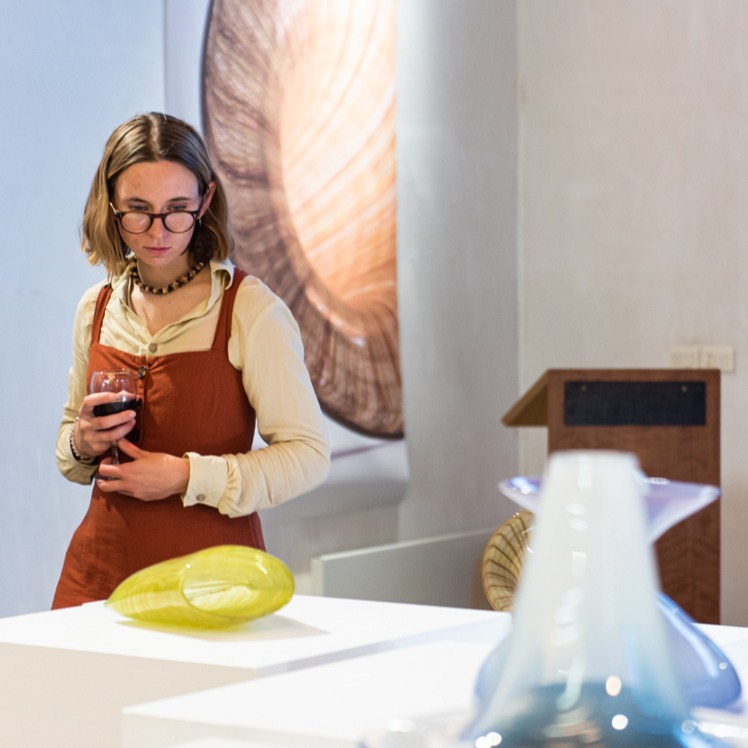
In the last five years a new generation of glassmakers and designers spontaneously revitalised the Murano glass blowing industry (Murano is the Venetian island designated to glass production since 1291). A new sensibility - regarding taste and willingness to experiment – has revived the situation, naturally and undoubtedly.
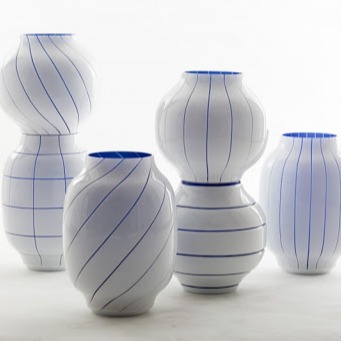
Matteo Zorzenoni, Interlinia, 2019, Blown and carved glass. Photo: Nason Moretti

Federico Peri, CALICI Lamps, 2019, Blown glass, metal, cable. Photo: Courtesy of the artist

Liam Fleming, Push Pot, 2019, Blown glass. Photo:Courtest of the artist
Design Tasmania are delighted to present Glass Utopia | a Touring Exhibition by Craft ACT
Video: Joffree Street Productions, 2020.
Photo credit: Emily Dimozantos, 2020.
Rachael Coghlan | CEO, Craft ACT: Craft + Design Centre Artistic Director, DESIGN Canberra
The first time I went to Canberra, I was invited as a speaker by the Design Canberra Festival at the Symposium dedicated to the Italian architect Enrico Taglietti, and I visited the Italian Embassy. This 1967 building is representative of the great job of this pioneer of Australian modernism. Yet the element that truly touched me, was the major chandelier installed by Taglietti for the Italian Ambassador’s Residence and made by a traditional Murano factory - so perfectly reflecting the thousand-year old tradition of Venetian glass blowing to build in my mind a spontaneous bridge between Italy, where I come from, and Australia.
My work as a writer and curator and my Milanese studio Mr.Lawrence are focused on contemporary design, so now is my natural setting. Considering the magnificent past of the Venetian glass blowing between XIV and XX century, it is interesting to reflect on the recent feared collapse or this craft. In my opinion from around the mid ‘80s, after the last masterpieces by Ettore Sottsass, with the lack of economic and creative interest from brands and factories, and an increasing shortage of craftsmen, Venetian glass seemed lost. It is a sad, and it is a familiar story worldwide.
Is traditional craft realistically still sustainable? Or it is necessary to create protected reserves to avoid extinction? While professionals were absorbed by theoretical speculation, in the last five years a new generation of glassmakers and designers spontaneously revitalized the Murano glass blowing industry (Murano is the Venetian island designated to glass production since 1291). A new sensibility - regarding taste and willingness to experiment – has revived the situation, naturally and undoubtedly. This recent interest is demonstrated by the Venice Glass Week now in its third edition, by an institution as Le Stanze del Vetro that in the last decade has dedicated research and exhibitions to the art of glassmaking in the 20th and 21st centuries. And - last but not least - by a new international market interested in contemporary glass design.
Starting from the chandelier by Enrico Taglietti - from my point of view, a first bridge between Murano glass and Canberra - I went on to consider if a link does somehow still exist, after half a century. Again thanks to Design Canberra Festival, I was invited to explore contemporary Australian art glass, and with enthusiasm I discovered a number of common elements between the two countries: inspiration, technique, aesthetic, research. Together with my partner Francesco Mainardi, we selected twenty-four pieces made by six Italian designers (in collaboration with Murano factories) and six Australian designers: Elizabeth Kelly, Federico Peri, Gala Fernandez, Jenni Kemarre Martiniello, Liam Fleming, Matteo Zorzenoni, Mel Douglas, Peter Bowles, Stories of Italy, Tom Skeehan, Federica Biasi, Zanellato/Bortotto.
We decided to keep the same idea of a community, not dividing the countries during the exhibitions of their work during the Design Canberra Festival, in order to activate a dialogue, and not a contraposition. We would like to suggest an independent lecture from the public, inviting visitors to discover spontaneously the common elements existing between all these pieces.
A realized Utopia, a glass Renaissance that is blossoming internationally - to demonstrate not only how the resilience of beauty is now stronger than ever, but also that creativity has no borders. Annalisa Rosso Design writer and independent curator Co-founder of Mr.Lawrence Craft ACT is one of the longest continuous-running visual arts membership organisations in Australia. Since 1971, we have been sustaining the practice of craft locally, nationally and internationally and our vision is to embed contemporary craft, making and design at the centre of everyday life in Australia’s capital, a global city of design. In 2014, we launched our successful outreach program, the DESIGN Canberra festival, which every November promotes experimentation, collaboration and innovation.
The Glass Utopia exhibition curated by Annalisa Rosso and Francesco Mainardi (Mr.Lawrence, Milan) is one part of the curated festival program which this year engaged 114,7000 people to over 200 events and attracted national and international media coverage. This significant exhibition which brings together traditional and contemporary craft practice in a modern design context, premiered in Canberra at the official residence of the Italian Ambassador to Australia. Featuring six Australian artists and six Italian artists, it stimulates a visual dialogue between the objects, designers and glassmaking traditions in both countries.
Perhaps not surprisingly, we have received interest in touring the exhibition to Italy, to Milan Design Week and Venice Glass Week. For Craft ACT, a small, not-for-profit membership organisation, this is a momentous opportunity to celebrate the global context for Australian contemporary craft and design and, through that, promote creative industries generally.
I thank the curators Annalisa and Francesco for their expertise, energy and friendship, the dedicated Craft ACT staff who brought this ambitious multi-venue exhibition to life in a very short timeframe, the Italian Ambassador to Australia Francesca Tardioli and her supportive team especially Giorgio Daviddi, and our valued exhibition partners AusGlass (the national body for the promotion of contemporary glass art in Australia) and Design Tasmania for making this project possible.
Photo Credit: Emily Dimozantos, 2020; Anthony Basheer.
Federica Biasi
Federica Biasi, born in 1989, graduated with honours from European Institute of Design in 2011. From 2011 to 2013 she worked with design agencies based in Milan. In 2014 she moved to Amsterdam to observe and understand the nordic design and the emerging trends, focusing on the aesthetic beauty and the formal simplicity which has inspired her personal style. In 2015 she set up her own design studio in Milan, working on product design, design consulting and interior design.
In 2016 became art director of the Italian company Mingardo, and in 2018 she takes the art direction of the office oriented brand Manerba.Meanwhile she collaborates as creative consultant with design companies as Fratelli Guzzini, focusing on worldwide trends research and forecasting: color, material & finishing, carefully analyzing the know-how of every company she’s collaborating with. She furthermore products design such as chair, armchair, sofa and tableware, strongly believing in the strength of the handcrafted products.
In January 2018 has been nominated by the master Andrea Branzi, and awarded in Paris, during Maison&Objet as one of 6 Italian Rising Talent. She is designing for companies such as Gallotti&Radice, CC-tapis, Mingardo, Potocco, Nason Moretti, My home Collection, and art direction and consultancy for brands such as Mingardo, Fratelli Guzzini, Manerba.

Image credit: Andrea Olivo

Image credit: Emily Dimozantos

Oleum Vase, 2019. Image credit: Anthony Basheer
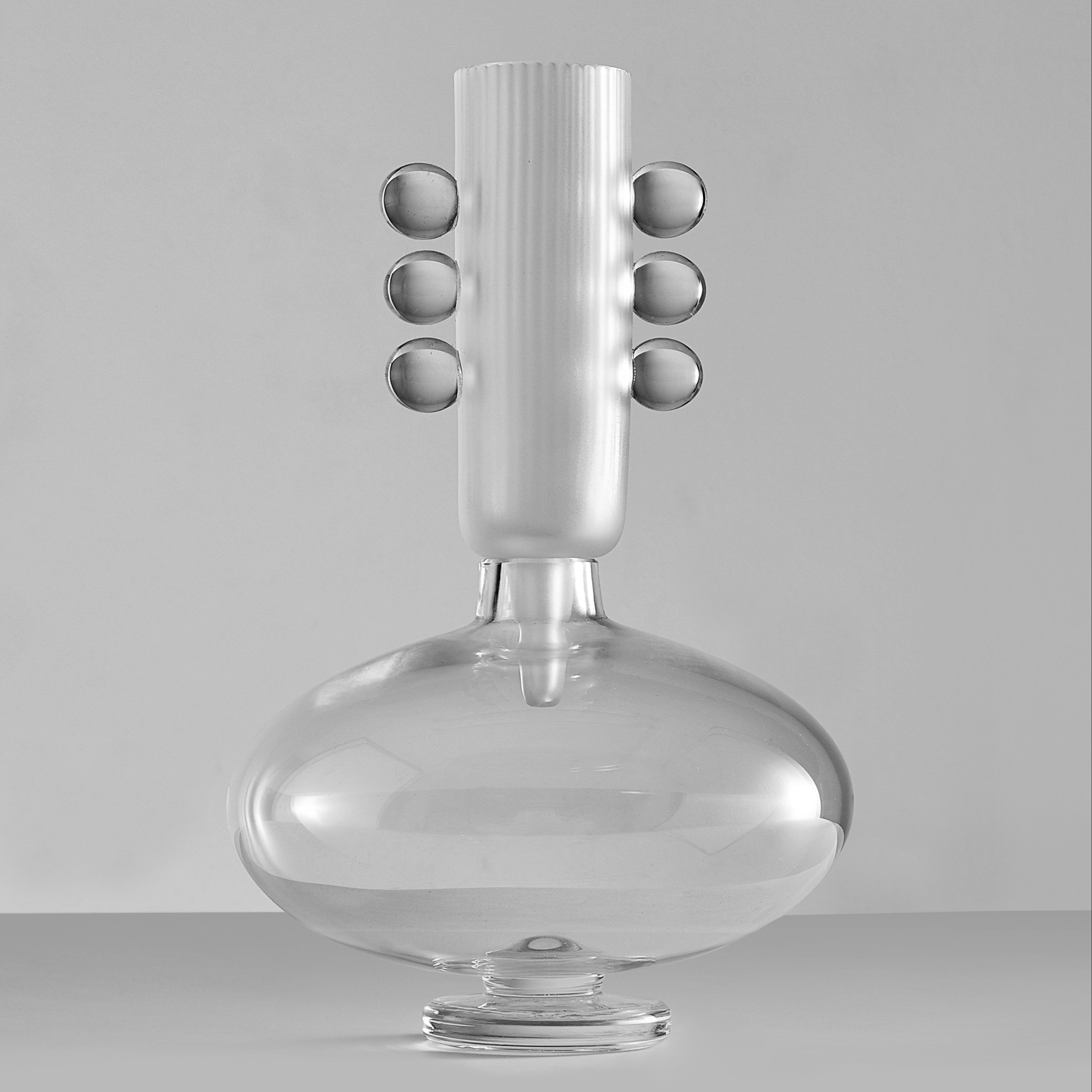
Oleum Vase, 2019. Image credit: Anthony Basheer
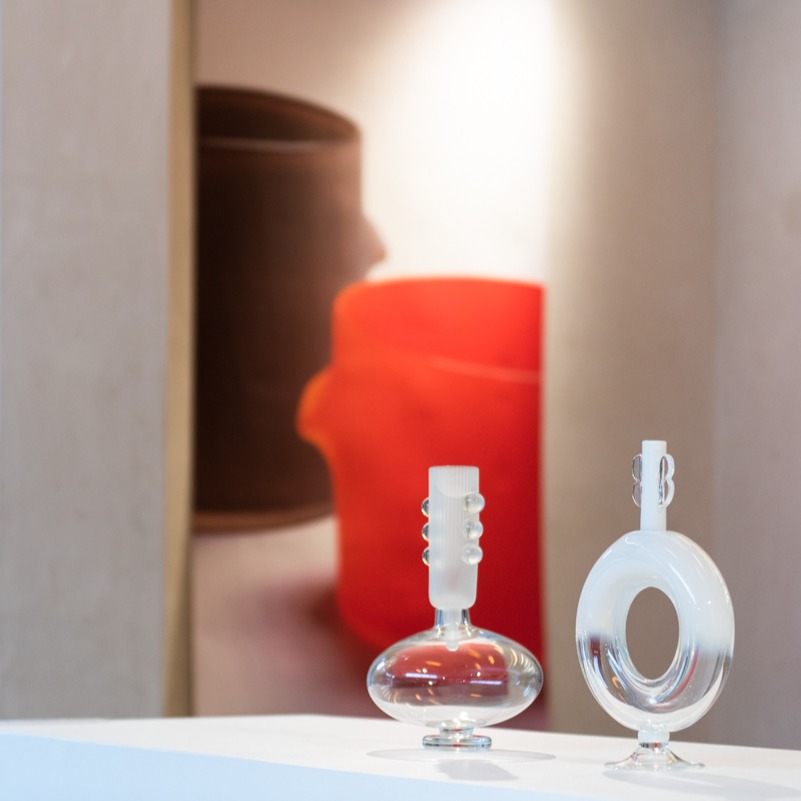
Image credit: Emily Dimozantos
Peter Bowles
Peter Bowles received an MA from Curtin University, and has lectured and taught at numerous institutions throughout the world including the Alberta College of Art and Design, Canada, The China Academy of Art, Hangzhou, China and BGC Glass Studio, Bangkok, Thailand. He is a quiet maker and a passionate teacher whose work spans studio production, exhibition work, public art and a somewhat more private sculptural practice. He has garnered an international reputation for his technical mastery and inventive approach to the craft of object making.
Peter was recently awarded the Premiers’ Award for Excellence in Contemporary Craft and has been a finalist in all the major Australian glass prizes including the Tom Malone Prize, Ranamok Glass Prize, Juta Cuny Franz Award and the City of Hobart Art Prize for glass. He has served on numerous boards and peer review panels including the Dept of Cultural affairs, (WA), Ausglass, Arts Tasmania and has been a member of the Australia Council Visual Arts Board.
He currently lives and works from his studio in Northern Tasmania.

Image credit: courtesy of the designer
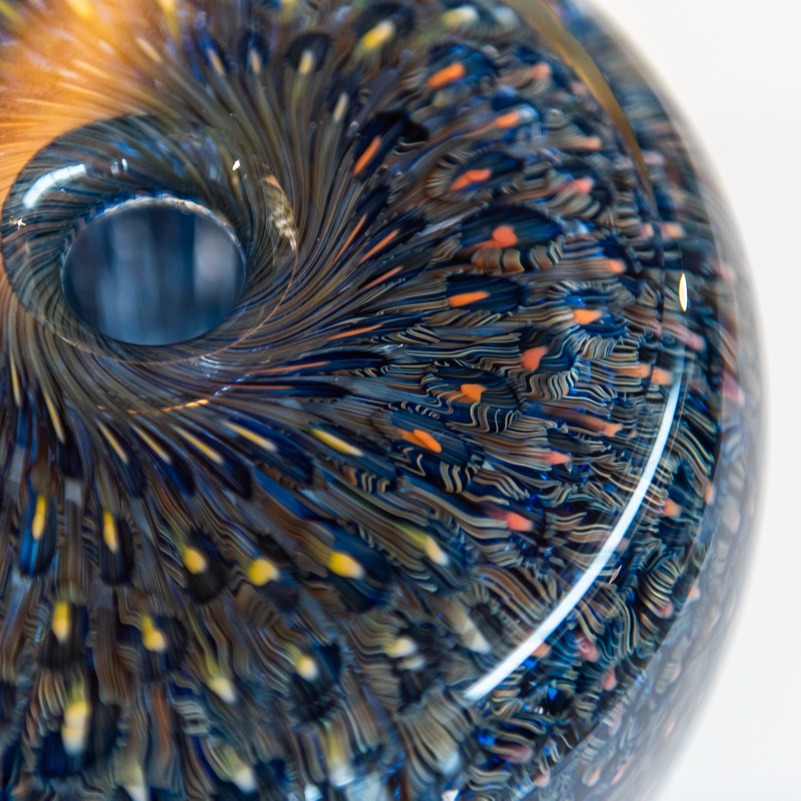
Image credit: Emily Dimozantos
“My work as a glassmaker is guided by a deep regard for materials and process. I’m intrigued by the relationship between available technology, human dexterity and practical ingenuity. I’m interested in how these factors interplay as critical aspects of the evolution of contemporary craft and object making.
Specifically, my work is informed by the examination and re-interpretation of classical European traditions and techniques of glassmaking. Particularly influenced by the ingenuity and inventiveness of early Venetian glassmaking my work explores qualities of line, pattern and form.
The works in this exhibition play at the intersection of the murrini making process, the subtle optics of hand polished surfaces, and the complex tonal ranges created through the chemical reactivity of various families of coloured glasses. They are made with a hope to quietly continue the conversation with these ancient processes, and in so doing, to find my own voice within this rich history of object making.”
- Peter Bowles

Murini Quadrants, 2019. Image credit: Anthony Basheer

Image credit: Emily Dimozantos

Image credit: Emily Dimozantos
Mel Douglas
Douglas has worked as an independent studio artist since graduating from the Canberra School of Art, Australian National University in 2000. Since 2008 she has been a sessional lecturer and is currently a PhD Candidate in the Glass Workshop at the ANU.
Both public institutions and private collections around the world including the Ebeltoft Museum of Glass, Denmark, National Gallery of Australia, Australia and the Corning Museum of Glass, New York, have collected Douglas’s work. She has received several major awards including the Ranamok Glass Prize in 2002, the International Young Glass Award in 2007 from Ebeltolft, the Tom Malone Prize 2014 and in 2019 her work was first targeted acquisition for the NGA’s Robert and Eugenie Bell Decorative Arts and Design Fund.

Image credit: courtesy of the designer
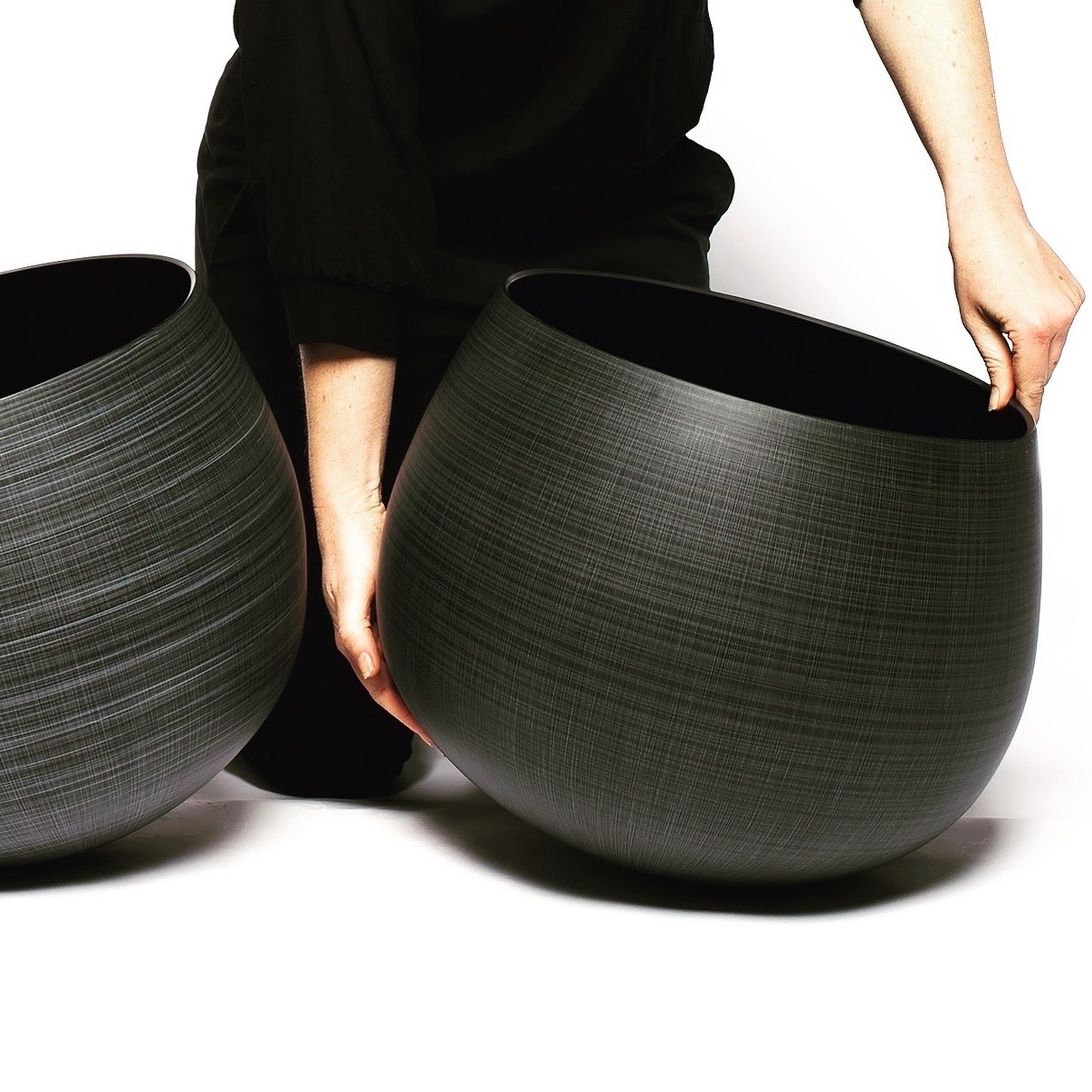
Image credit: Anthony Basheer
Gala Fernández
Born in Madrid in 1969, designer Gala Fernández studied art and design at Facultad de Bellas Artes de la Universidad Complutense de Madrid, graduating in 1992 with a Bachelor’s degree. She continued her studies in industrial design at the Istituto Europeo di Design in Milan until 1994. In 1995, Fernández cofounded a Madrid studio called Assembla Design with Riccardo Marzullo and worked together with him at the brand new IED Madrid until year 2000. In 2000, she moved to Treviso, Italy to work with Jaime Hayón at the Benetton Group’s Fabrica studio. Together, they oversaw the development of multiple interior and product design projects in the studio until 2004.In 2005, Fernández moved to London and established her eponymous design studio. Fernández’s multidisciplinary work ranges from art and design to curating, as well as interior and product design, graphic design, and publishing. In 2006, she returned to Madrid and began an ongoing collaboration with artist and designer Oscar Mariné. In 2008, she became studio manager for El Ultimo Grito in Berlin, but kept a foot in Madrid, where she returned to live the subsequent couple of years. In 2011, she moved to Lessac, France to direct the summer courses at the esteemed Domaine de Boisbuchet. From 2012 to 2015, Fernández divided her time between Mexico City—where she launched a multidisciplinary creative studio called Piopio Design Labs, in partnership with Berta Roda—and Madrid. In 2013, Fernández helped establish Abierto Mexicano de Diseño (the Mexico City Design Festival); she acted as a partner and consultant for the project until 2015
In 2015, Fernández relocated to Marbella in Andalussia, Spain. She continues to work with Berta Roda as Piopio Design Labs. In 2016, the pair launched an art and design gallery called Bergman Rd. Gallery. In 2016, Fernández also collaborated with CuldeSac Editions, a project with Valencia-based design and communications studio Culdesac.
Today she lives in Milan (since 2017) and has worked recently for Italian brands as AA Murano Glass, Brevi, Sisley and Moroso.
Fernández has exhibited her work in several galleries and museums across the globe, including, but not limited to: The Buccaneer’s Booty – Gala Fernández Recent Works, curated by Maria Cristina Didero at Bergman Rd. Gallery (2016); Lámparas de la Real Fábrica de Cristales s.XVIII – s. XXI, an exhibition featuring the lamp collection One Off Worlds and the chandelier Hail! Bright Cecilia, made in collaboration with renown Spanish glass manufactory La Real Fábrica de Cristales de La Granja and presented in their 18th-century Real Sitio de San Ildefonso de la Granja factory and museum (2016); Not Straight Worlds, a joint exhibition with David Trullo at La Galería Factoría in Madrid (2015); This is not a Duet, curated by Maria Cristina Didero, a joint exhibition with Sung Jang, featuring Caro Ettore, a collection of small stone sculptures produced in Mexico, at Chamber Gallery in New York (2015); and Out of the Cage, presented by Marion Friedmann Gallery during the London Design Festival (2014).
The designer has also taught and lectured at numerous institutions, including the Design School of Universidad Anáhuac in Mexico City; the Instituto Europeo di Design in Madrid; Faculdade de Arquitectura da Universidade de Lisboa (FAUTL) in Lisbon; NAi Nederland Architectuurinstituut in Rotterdam; and both the Royal College of Art and Goldsmiths in London.

Image credit: Laura Huhta

Organic Geometry, 2019. Image credit: Anthony Basheer

Organic Geometry, 2019. Image credit: Anthony Basheer

Image credit: Emily Dimozantos
Liam Fleming
Liam Fleming started blowing glass at the age of 16, undertaking work experience in a private studio in Adelaide. Completing his studies at the University of South Australia in 2011, he was accepted as an associate at the JamFactory in 2012. Fleming has been the Production Manager in the JamFactory glass studio since 2015.
Fleming has collaborated with many other makers most notably furniture designer/maker Jon Goulder in 2017. The Congruent side table was exhibited in Milan during the Milan design week and London during the London design week. Fleming also exhibited in Berlin during the Australia Now with the assistance of the JamFactory and Canberra glassworks.

Image credit: courtesy of the designer

Push Pot, 2019. Image credit: Anthony Basheer
Elizabeth Kelly
Elizabeth Kelly started her craft in 1985 training as a production glassblower, moving into applied design and material investigation through education and working in the field. She furthered this inquiry by undertaking a post tertiary degree in conceptual art. This lead to a thematic approach in her art practice and has ultimately resulted in research-driven work.
Kelly is a specialist in colour chemistry and industrial moulding processes for glass and other materials that Kelly applies to sculpture, objects and architectural commissions.For the last 16 years, she has worked from an independent studio that consolidates her commitment to the canon of sculpture. Elizabeth Kelly has been a Craft ACT: Craft + Design CentreAccredited Professional Member since 2003.
Elizabeth Kelly
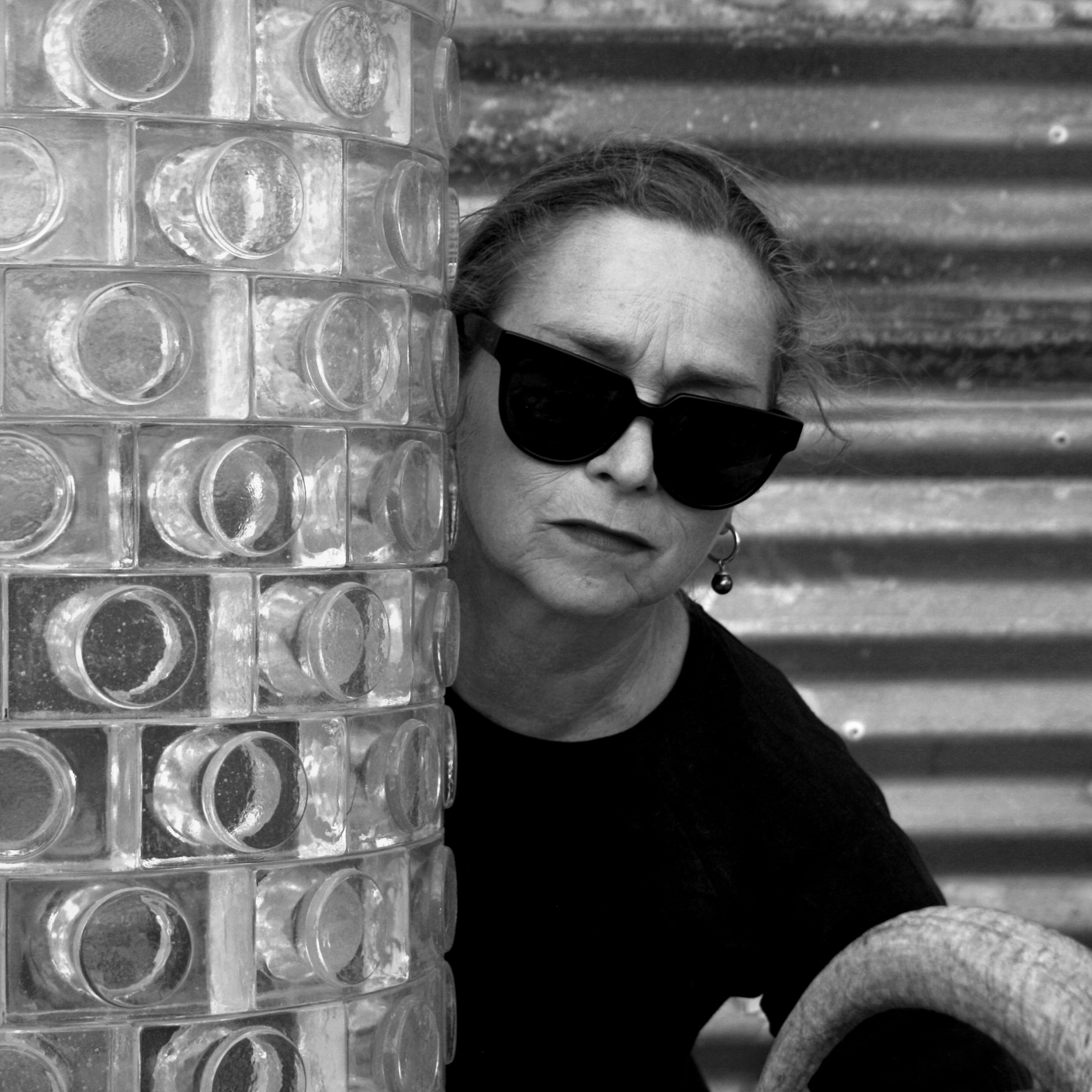
Image credit: courtesy of the designer
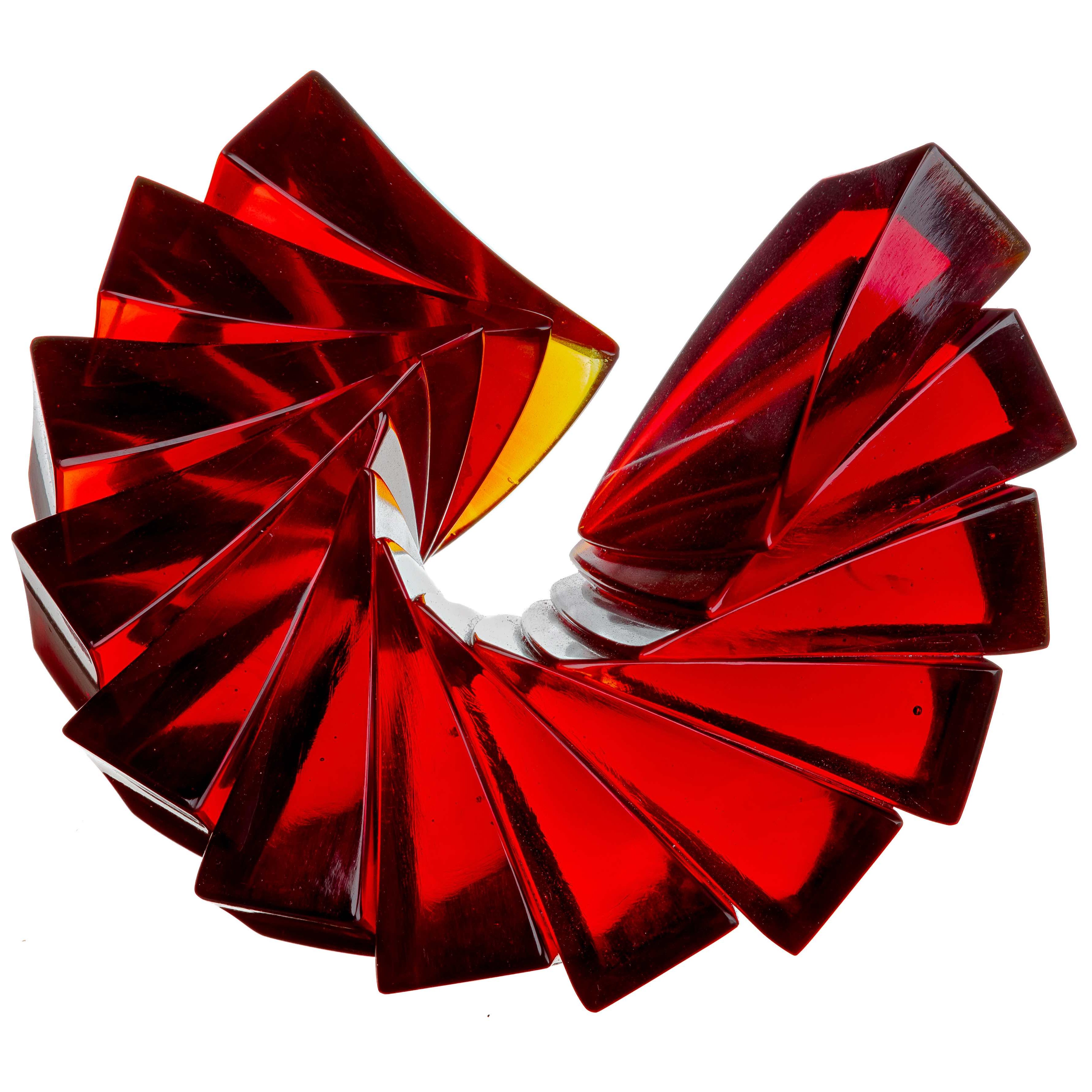
Red Sequentia, 2019. Image credit: Anthony Basheer
“I started my craft in 1985 training as a production glass blower, moving into applied design and material investigation through education and working in the field. I furthered this inquiry undertaking a post tertiary degree in conceptual art that lead to a thematic approach in my art practice and has ultimately resulted in research driven work. I am a specialist in colour chemistry and industrial moulding processes for glass and other materials that I apply to sculpture, objects and architectural commissions. For the last 16 years I have worked from an independent studio that consolidates my commitment to the canon of sculpture.”
- Elizabeth Kelly, October 2019
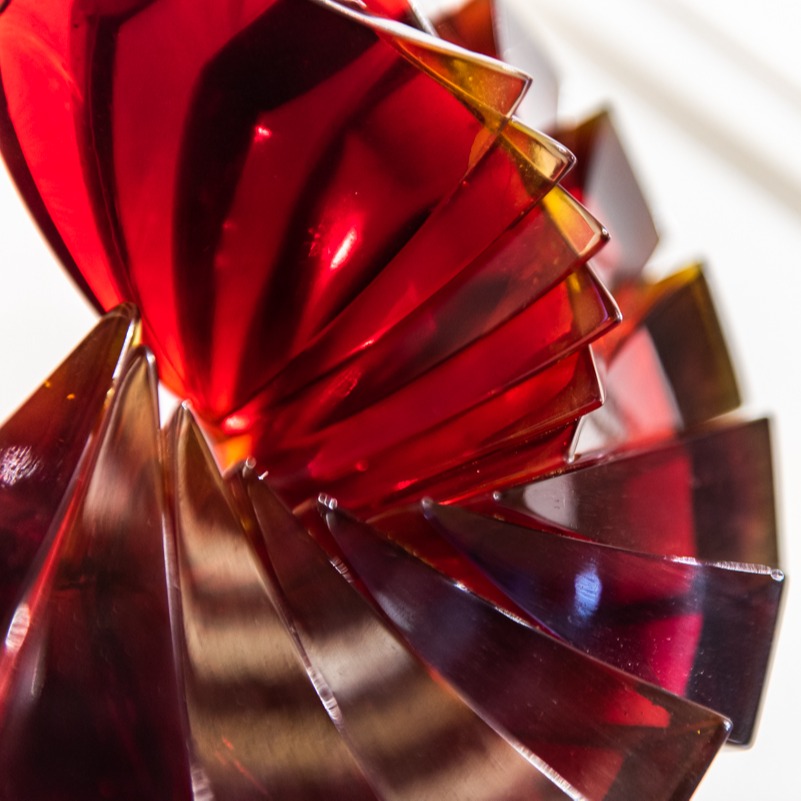
Red Whorl, 2019. Image credit: Emily Dimozantos

Red Whorl, 2019. Image credit: Emily Dimozantos

Red Sequentia, 2019. Image credit: Emily Dimozantos
Jenni Kemarre Martiniello
Jenni Kemarre Martiniello is a contemporary urban based Aboriginal (Arrernte) glass artist. In her practice, Martiniello aims to produce a body of traditionally inspired works that pay tribute to traditional weavers, and provide recognition for ancient cultural practices through the contemporary medium of glass. In her current artistic practice Jenni concentrates on the incredibly beautiful forms of traditional woven eel traps, fish traps, fish scoops, dillibags and coiled and open weave baskets by Kaurna, Ngarrinjerri, Gunditjmara, Arrernte and NE Arnhem Land weavers.
Jenni Kemarre Martiniello has been a Craft ACT: Craft + Design Centre Accredited Professional Member since 2017.

Image credit: Adam McGrath

Image credit: Emily Dimozantos

Medium Bullrushes Eel Trap, 2018. Image credit: Emily Dimozantos

Medium Bullrushes Eel Trap, 2018. Image credit: Anthony Basheer

Medium Bullrushes Eel Trap, 2018. Image credit: Anthony Basheer
Federico Peri
Federico Peri was born in Montebelluna (TV), Italy in 1983. His early years, spent in close proximity to metal production, were the basis of his future design inspirations. After receiving his degree in Interior Design at IED Milan, he moved to Paris thanks to a scholarship to live in an artist's residence. This period, filled with international influences, gave rise to his professional growth, impassioned by the great masters of design. On returning to Milan, he worked at Vudafieri Saverino Partners, where he specialized in concept and retail design. In 2011 he started his own Interior Design studio, designing commercial and private spaces, while also collaborating with other companies as a creative consultant.
Since April 2014, after a series of custom furniture, he produced a collection to express the spirit of his design philosophy; the fusion of historical and contemporary, by juxtaposing true materials with essential geometries. Nilufar, an international design gallery based in Milan, represents his limited edition products, including the lighting collection “Shapes”, nominated in 2016 for the German Design Awards.
Among the candidates as "best emerging designer" at the Milan Furniture Fair 2017 with the collection “Galerie” designed for FontanaArte and nominated for the “rising talent awards” at Maison&Object 2018 edition.

Image credit: Stephen Giftthaler

Image credit: courtesy of the designer
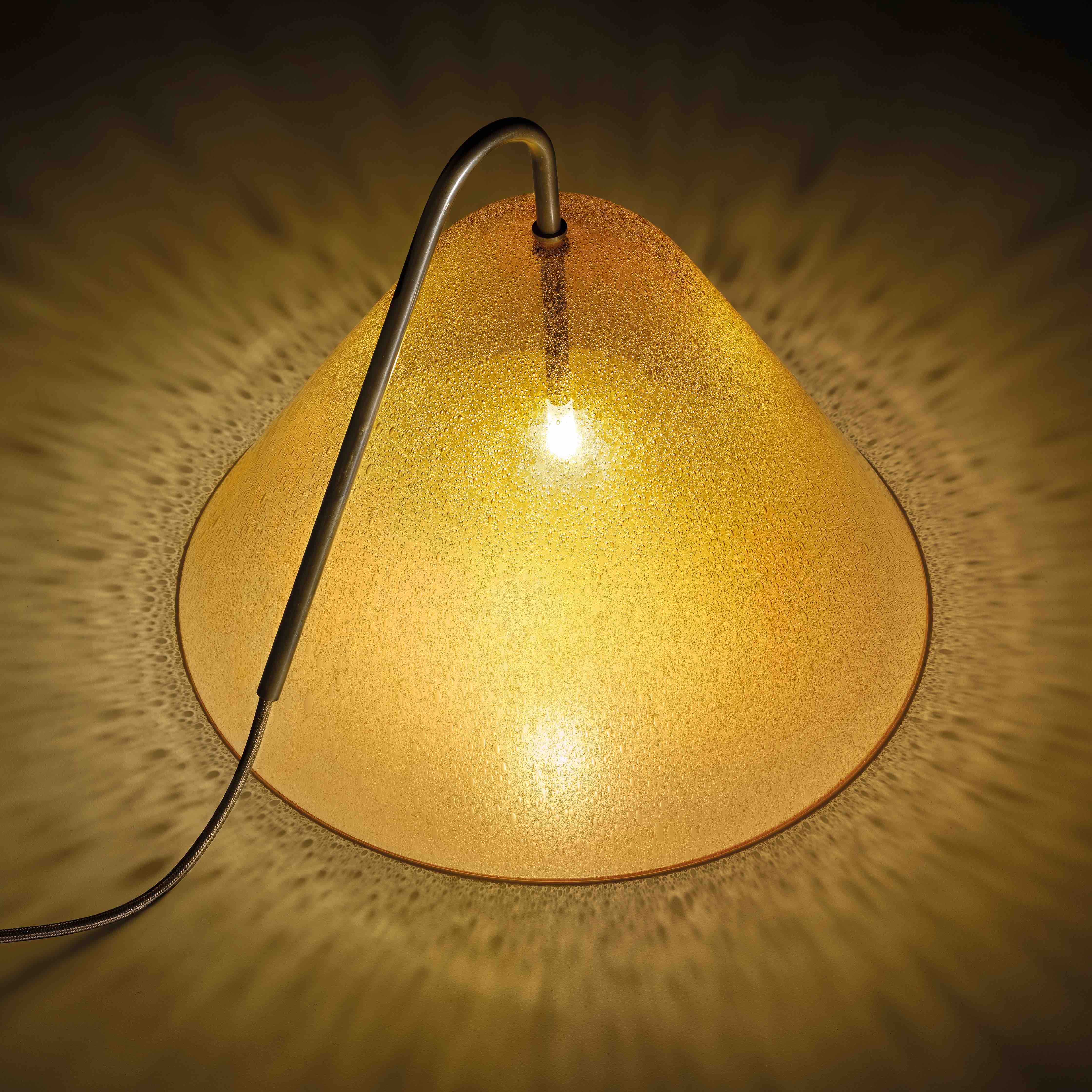
Calici Low Lamp, 2019. Image credit: Anthony Basheer

Calici Large Lamp 2019. Image credit: Anthony Basheer

Image credit: Emily Dimozantos
Tom Skeehan
Tom Skeehan is an industrial designer based in Canberra,Australia.
Tom is the founder of SKEEHAN studio which specialises in commercial furniture and edition objects for the home. A noted young designer Tom Skeehan exhibits at design fairs across Australia and in New York, Singapore and Milan (Italy). Tom Skeehan has been a Craft ACT: Craft + Design Centre Accredited Professional Member since 2006.
SKEEHAN studio is a multidisciplinary design practice based in Australia. Creating intelligent solutions for the everyday and partnering with leading brands to form a material driven and honest approach to design.
Creating products designed to help live, learn and engage, building meaningful relationship with materiality and an object’s lifecycle.
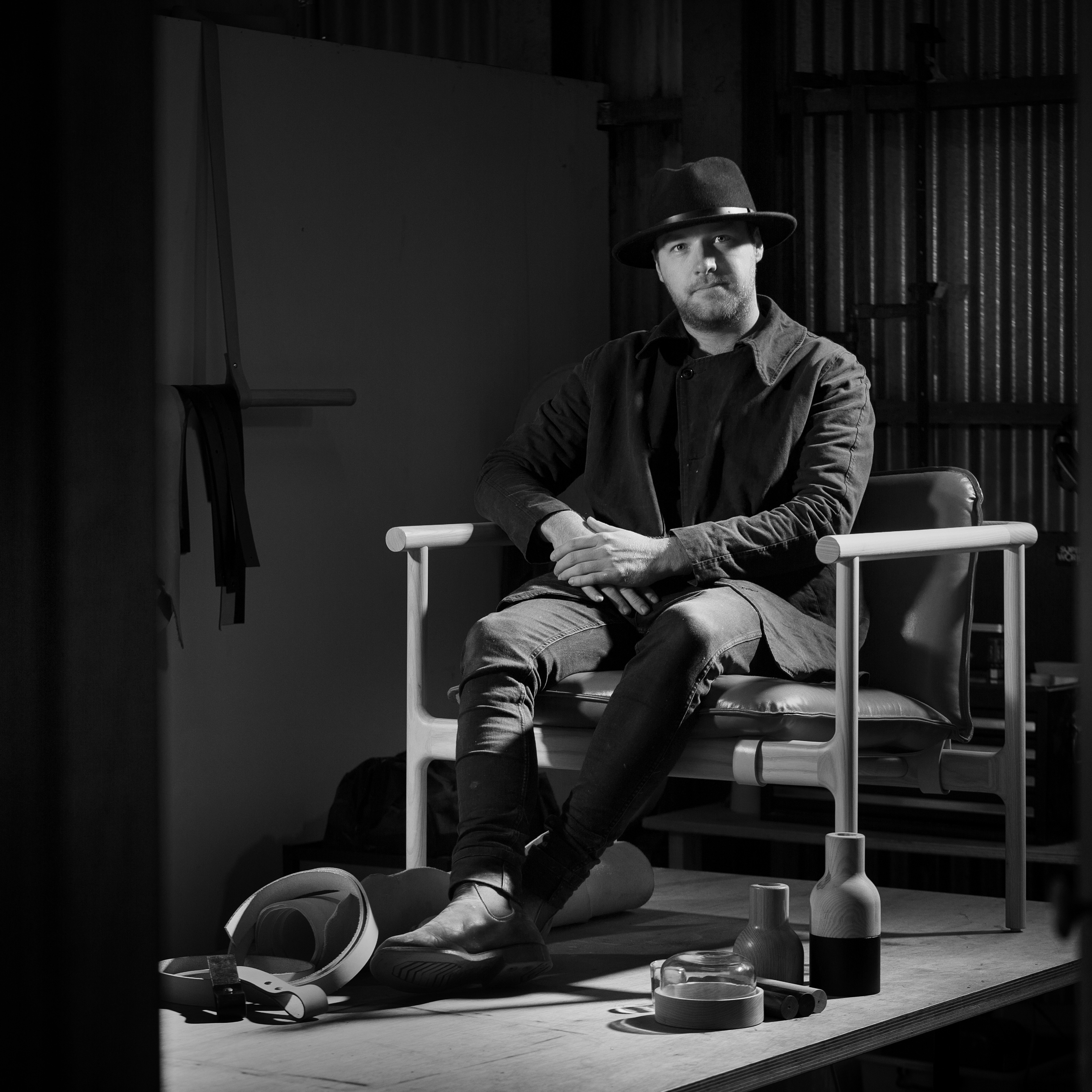
Image credit: Adam McGrath

So Light 1/1 Pink, 2019. Image credit: Anthony Basheer
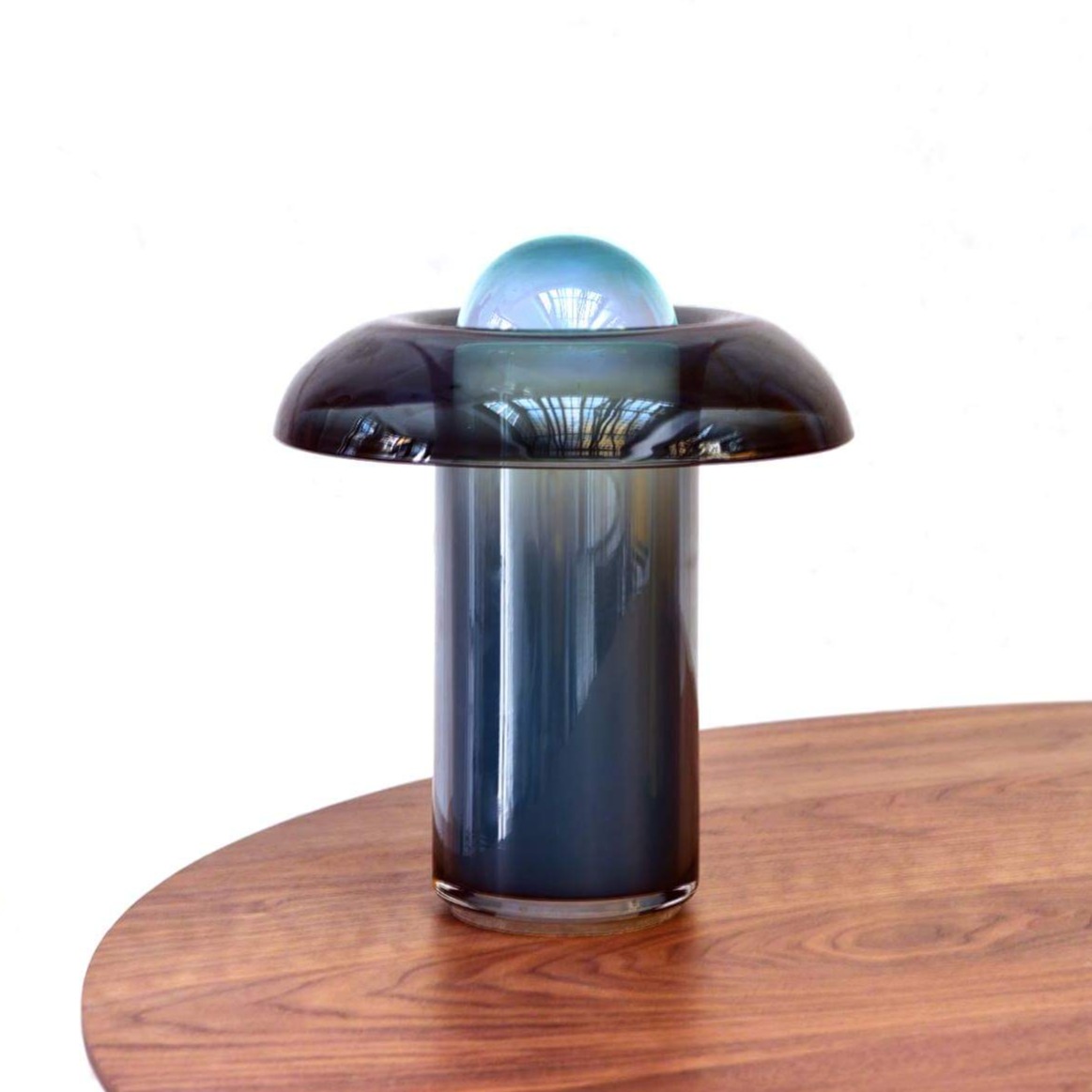
Haru Light, 2019. Image credit: Anthony Basheer
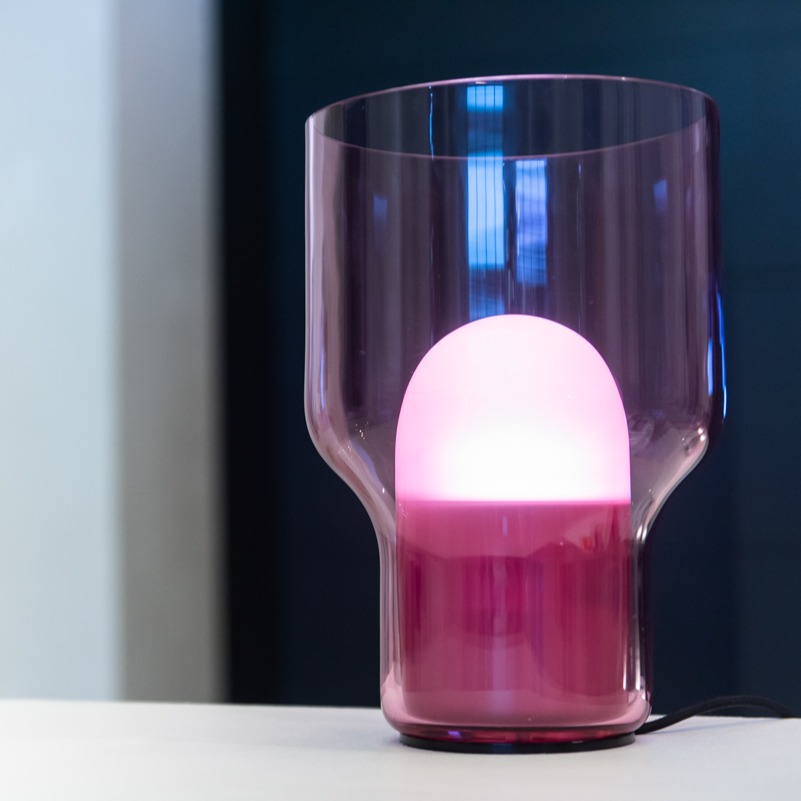
Image credit: Emily Dimozantos

Image credit: Emily Dimozantos
Stories of Italy
Stories of Italy is a studio and a brand based in Milan that realize self-handling pieces connected with traditional Italian craft. Material focus is on Murano blown glass. Inspiration comes from Italy's great archaeological, historical and cultural heritage. Objects and symbols from a common past read in a contemporary way.
Works are conceived as “everyday objects” that are aesthetically beautiful but also tools of communication: all the pieces carry their own stories, blending design, craft, art, to capture the essence of the most iconic Italian craft traditions.
The founders and creative directors, Matilde Antonacci (b. 1981) and Dario Buratto (b. 1981), met in Florence in 2000. After graduating from Polimoda institute, they moved to Milan, where they worked in the fashion industry for world-renown brands, like Helmut Lang, Acne Studios, Costume National, Dsquared, Ballantyne.
In 2016, they embarked on a new project that incorporates two of their passions, design and high-end Italian artisanship.
In the three years since its inception, alongside its own living and tableware products for retail and galleries, Stories of Italy has been collaborating with architecture firms on projects for the hospitality sector, designers and various brands, such as Four Seasons Hotel Florence, Mandarin Oriental Paris, The Dorchester Dubai, Gallery Bensimon, Diptyque, Vivienne Westwood, Gilles&Boissier, Pierre Gonalons, Visionnaire.
Lately, SOFI’s creative output has also extended to lighting design projects, with its own collection and customized contract projects.

Image credit: courtesy of the designers
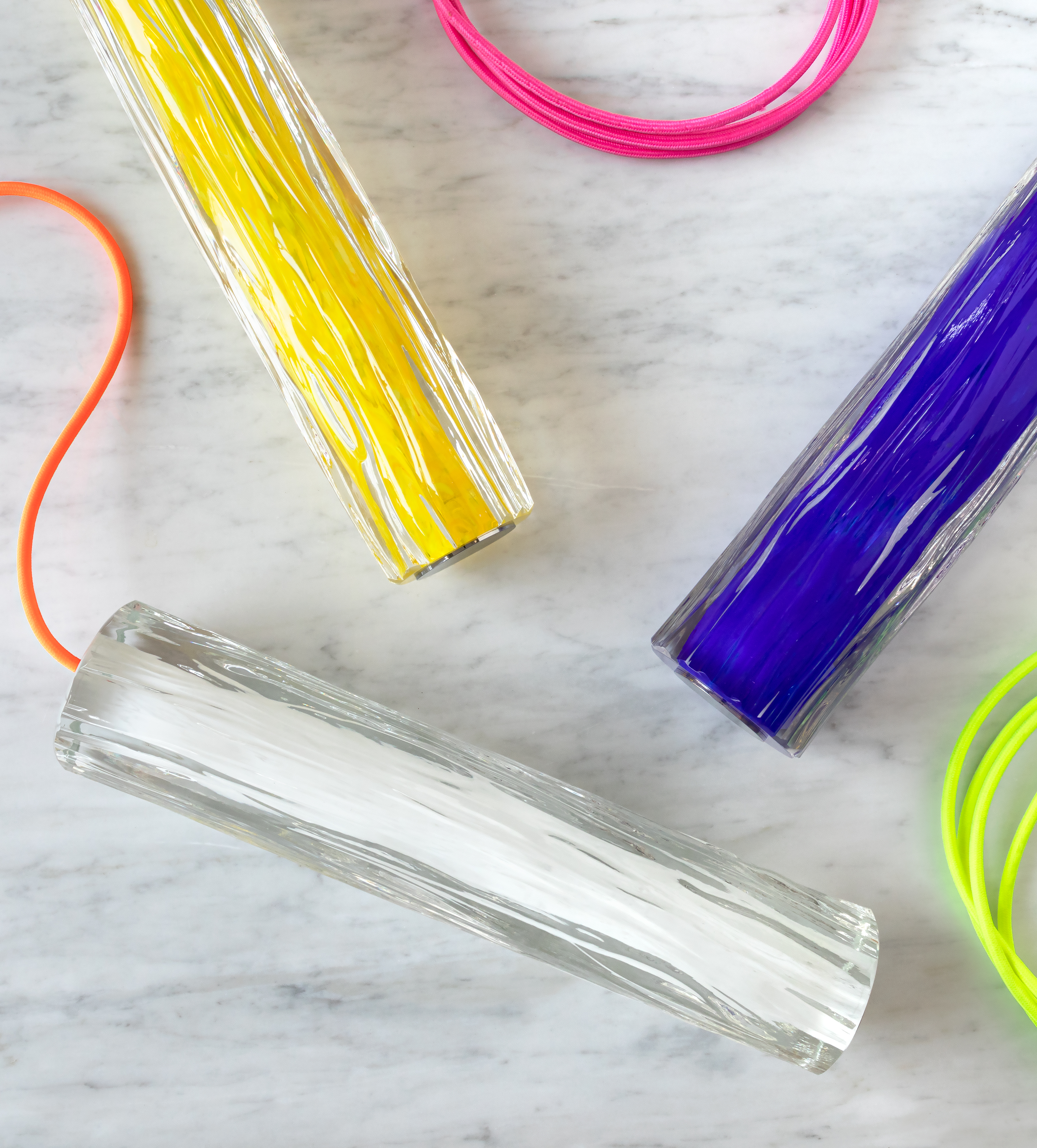
Bastum White, 2019. Image credit: Anthony Basheer
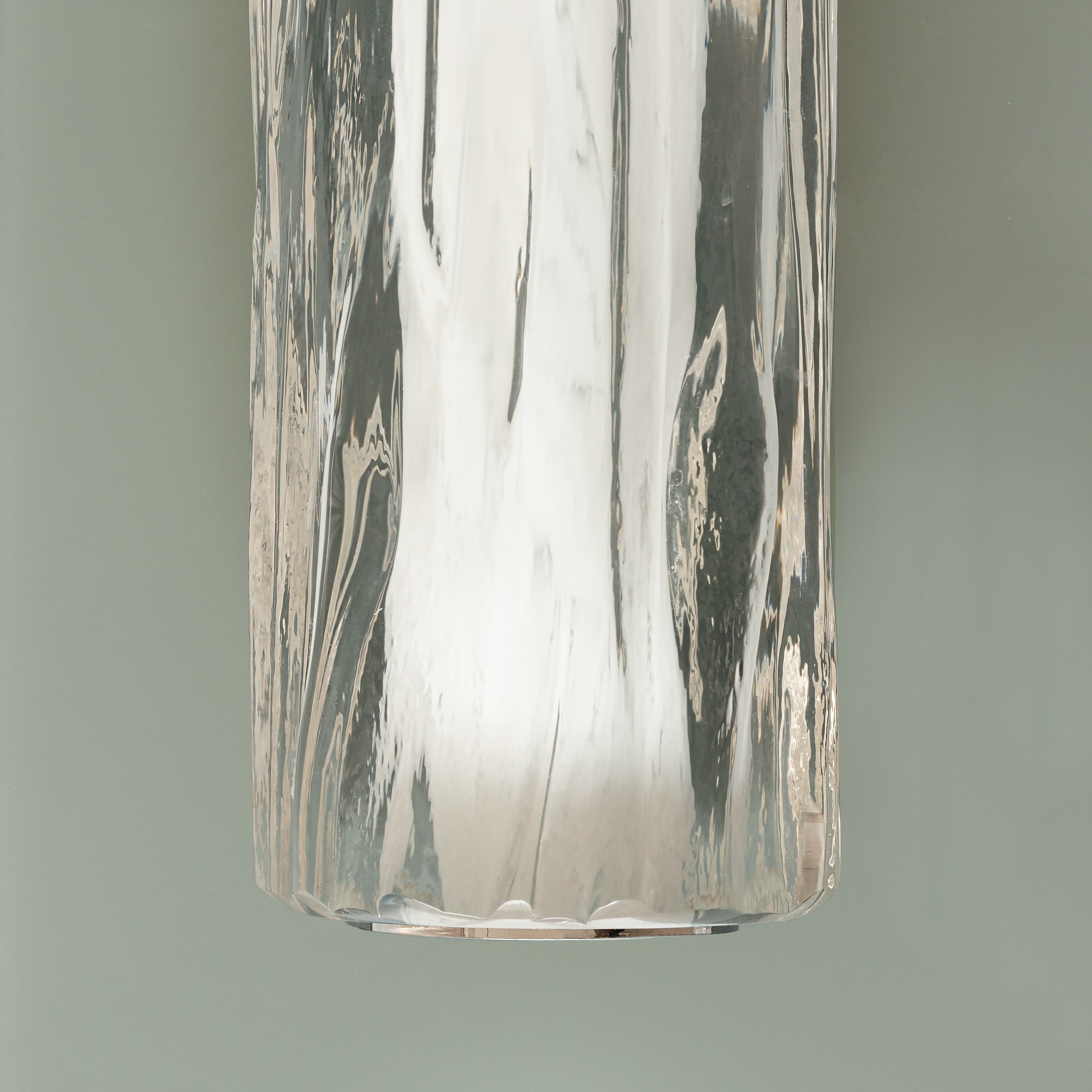
Bastum White, 2019. Image credit: Anothny Basheer
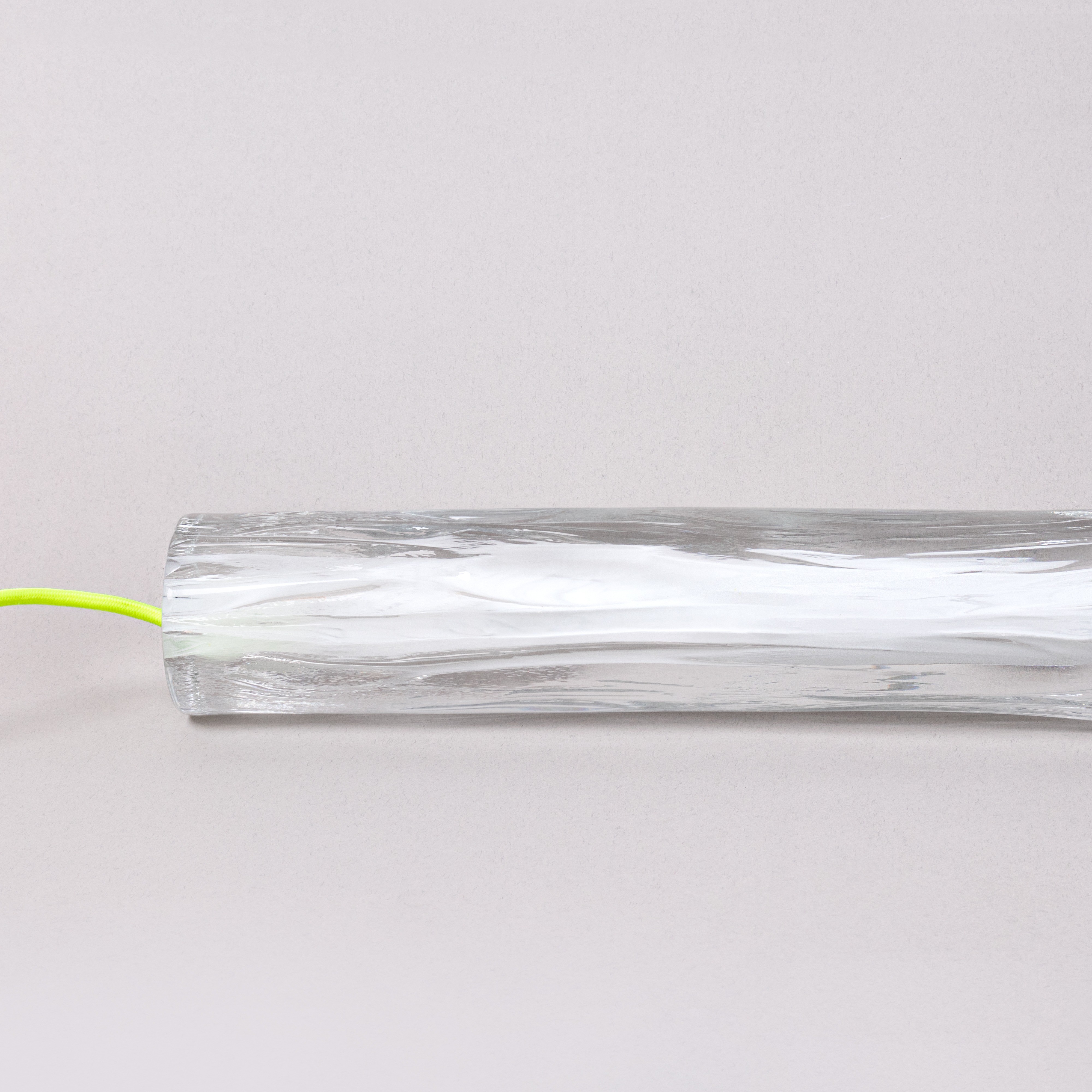
Bastum White, 2019. Image credit: Anthony Basheer

Untitled, 2019. Image credit: Emily Dimozantos
Zanellato/Bortotto
After meeting as students at ECAL in Lausanne, Switzerland, Giorgia Zanellato and Daniele Bortotto founded Zanellato/Bortotto Studio in Treviso, Italy, in 2013.
Their first joint work, Acqua Alta, was dedicated to the city of Venice and presented at the Salone Satellite in Milan in 2013; it marked the beginning of their long-term research project on the relationship between places and the passage of time.
Zanellato/Bortotto collaborate with several Italian and international brands and galleries such as Moroso, Rubelli, Cappellini, Cedit, Louis Vuitton, Galleria Luisa delle Piane, The Gallery Bruxelles.
Their work has been shown in galleries and institutions including MAXXI, Rome; Triennale Design Museum, Milan; and Somerset House and The Aram Gallery in London.
In 2015, they were named Young Talent of the Year by Elle Decor Italia, were awarded the NYCxDESIGN prize by Interior Design in 2016, and won the Red Dot Design Award in 2017.

Image credit: Mauro Tittotto

Sombrero + Perla, 2019. Image credit: Emily Dimozantos
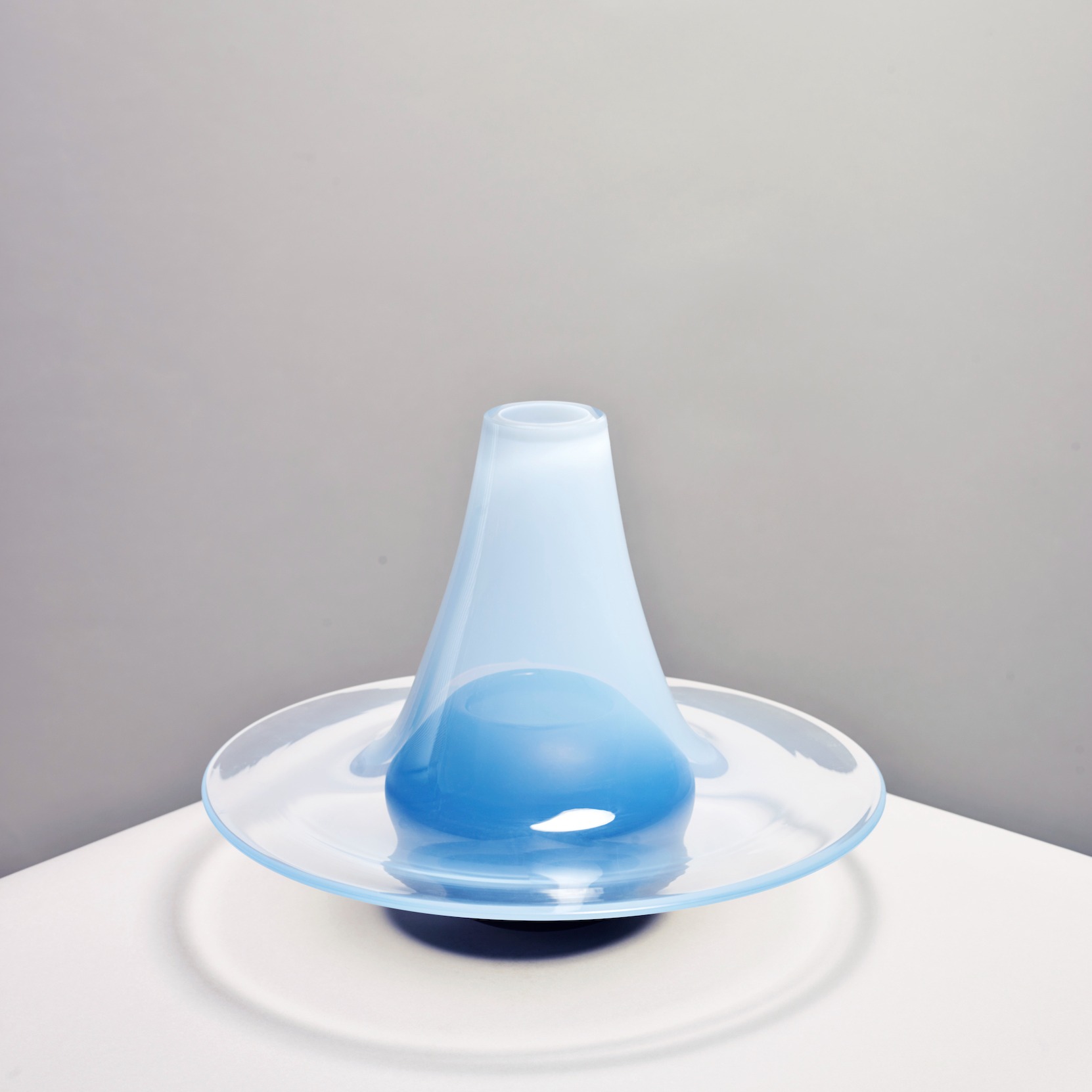
Sombrero + Perla, 2019. Image credit: Anthony Basheer

Sombrero + Perla, 2019. Image credit: Anthony Basheer

Image credit: Emily Dimozantos
Matteo Zorzenoni
The style that sets him apart and has made him one of the most promising Italian designers is the continuous study of the materials and being able to unlock their unexpected potential, like creating glasses made of concrete, glass structures, liquid metal tables...
His projects have been showcased in some of the most important exhibitions worldwide including: Maxxi in Rome, Triennale di Milano, London Design Festival, Centre Pompidou and the Biennale of Architecture in Venice. Zorzenoni has been a teacher at the University of Architecture of Venice IUAV and leads workshops and courses for IED in Madrid, the Domaine de Boisbuchet (Vitra Design Museum),Fabirca, Mexico Design Week and Kozice. After a long experience as a consultant for Fabrica (since 2006) he currently works alongside Jaime Hayon following the Italian branch of the studio. In parallel, he continues his research into the world of high-quality craftsmanship and the creation of new projects for clients such as Cappellini, Mercedes Benz, Replay, Alcantara, Benetton, Bosa, Miniforms, Somethingood, Agusta Westland, MM Lampadari,Torremato Nason Moretti, Novamobili and others.
Matteo Zorzenoni is now considered one of the most promising Italian designers, and focuses his research on the continuous study of material and on the discovery of their unexpected potentials. This incessant exploration of material elements allows him to create products with a non-conventional soul, such as drinking cups made of cement, structures in glass, and tables in liquid metal.

Image credit: courtesy of the designer

Interlinia, 2019. Image credit: Emily Dimozantos
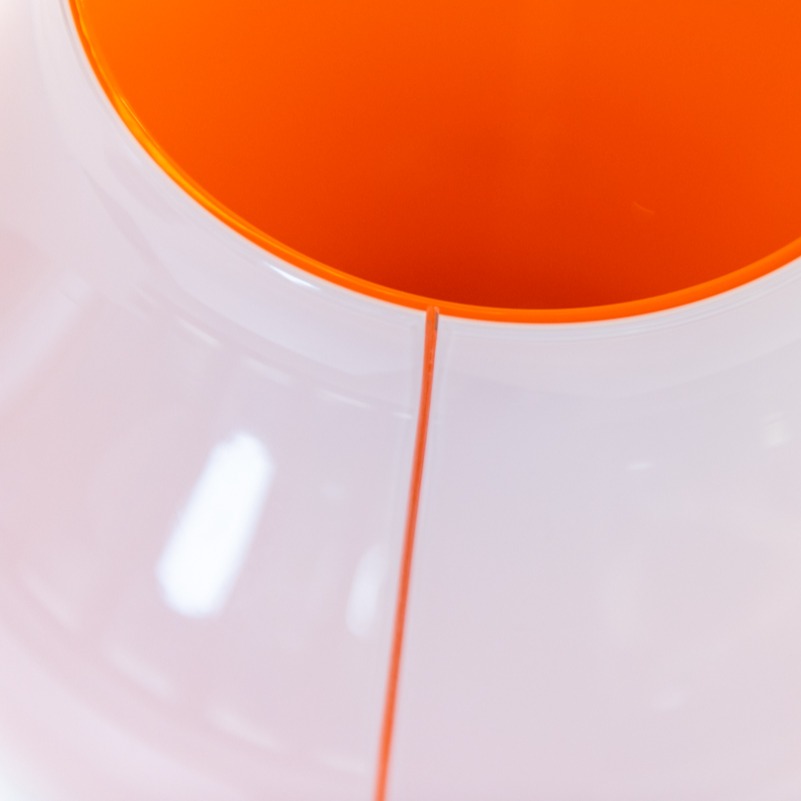
Interlinia, 2019. Image credit: Emily Dimozantos

Image credit: Emily Dimozantos

Image credit: Emily Dimozantos


